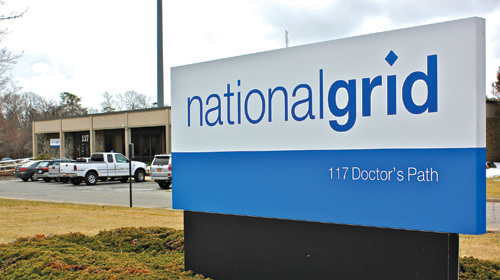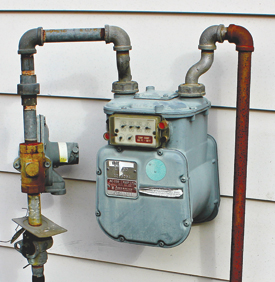As demand for natural gas increases, National Grid says service is coming

Southold Town residents and businesses have been clamoring for access to natural gas for heating, cooking and hot water since the price began to plummet two years ago but, to date, there’s been little action on the part of National Grid to meet the growing demand.
“There’s a pretty steady and broad-based demand for gas,” Supervisor Scott Russell said in an interview last week. “My understanding is the capacity to serve the town is there. The need is the infrastructure.”
That could change in the near future, said National Grid spokeswoman Wendy Ladd. The company is working on a “gas reinforcement project” that would run a second main line down Route 48 from Cutchogue to Southold, she said.
Although there is already a gas line there, she said the new line could accommodate higher pressures than the existing line, making it possible to bring natural gas to more neighborhoods.

“National Grid continues to invest in gas system infrastructure across Long Island including the North Fork,” Ms. Ladd added. “National Grid’s construction program is designed to support continued growth across the region.” She said the company is still finalizing plans for the Cutchogue to Southold line.
There has been some concern voiced locally that National Grid may not want to invest in gas system infrastructure since the contract to service the LIPA’s electric grid will be given to PSEG next year.
Ms. Ladd said that National Grid still owns, and plans to operate, the natural gas system after the electric contract switch.
Mattituck resident Art Tillman, who also serves as the town’s Democratic Party chairman, has recently taken a part-time job selling natural gas for a company called JJT Energy.
That company is known in the business as an “Esco,” an independent producer authorized to supply gas using National Grid’s infrastructure when the gas industry was deregulated in the 1990s.
Customers of Escos receive one bill from National Grid, which is broken down into two sections — one for the gas used and one for the cost of delivering the gas. JJT’s customers pay both companies with one bill.
“We buy gas on the New York Mercantile Exchange,” said Mr. Tillman. “Our thing is to sell gas at the lowest possible rate.”
Mr. Tillman said natural gas is a relatively easy sell, but hooking up new customers has proven infuriating. He said it’s further complicated by the fact that there is no publicly available map of gas distribution lines because of the threat they could be tampered with by vandals or terrorists.
Even fire department members, he said, have to call National Grid when responding to a scene to ask whether there are gas lines in the area.
Neighbors, of course, know anecdotally whether their neighbors have access to gas.
Barbara Meyran, who lives on Saltaire Way in Mattituck, knows there is gas available on nearby Mill Road. She’s currently circulating a petition among her neighbors to bring gas lines to their neighborhood.
“Ten people have called National Grid and nobody calls them back,” she said. “We’ve been trying for months and months.”
Mr. Tillman said many greenhouse operators are also interested in hooking up, in part because greenhouses currently using oil heat are at a huge competitive disadvantage against those with gas heat.
“Greenhouses are huge users of energy,” said Mr. Tillman. “It’s not fair for growers using oil to be competing with growers who use natural gas.”
He said it usually costs about $100 per foot to bring a gas line to a customer.
“That’s nice if a main is in front of the house, but in many cases it’s a half-mile to a main,” he said. “Therefore, it’s cost prohibitive. Just as in cable and water, gas should be available to those that want it.”
For his part, Mr. Russell said he has never received a map of the gas lines, which he requested from National Grid a year ago. He said at one point he was told the company was interested in expanding access, but had questions about how to charge new customers for the lines.
“National Grid would find a very receptive community” here, the supervisor said. “It’s a question of getting their attention.”







